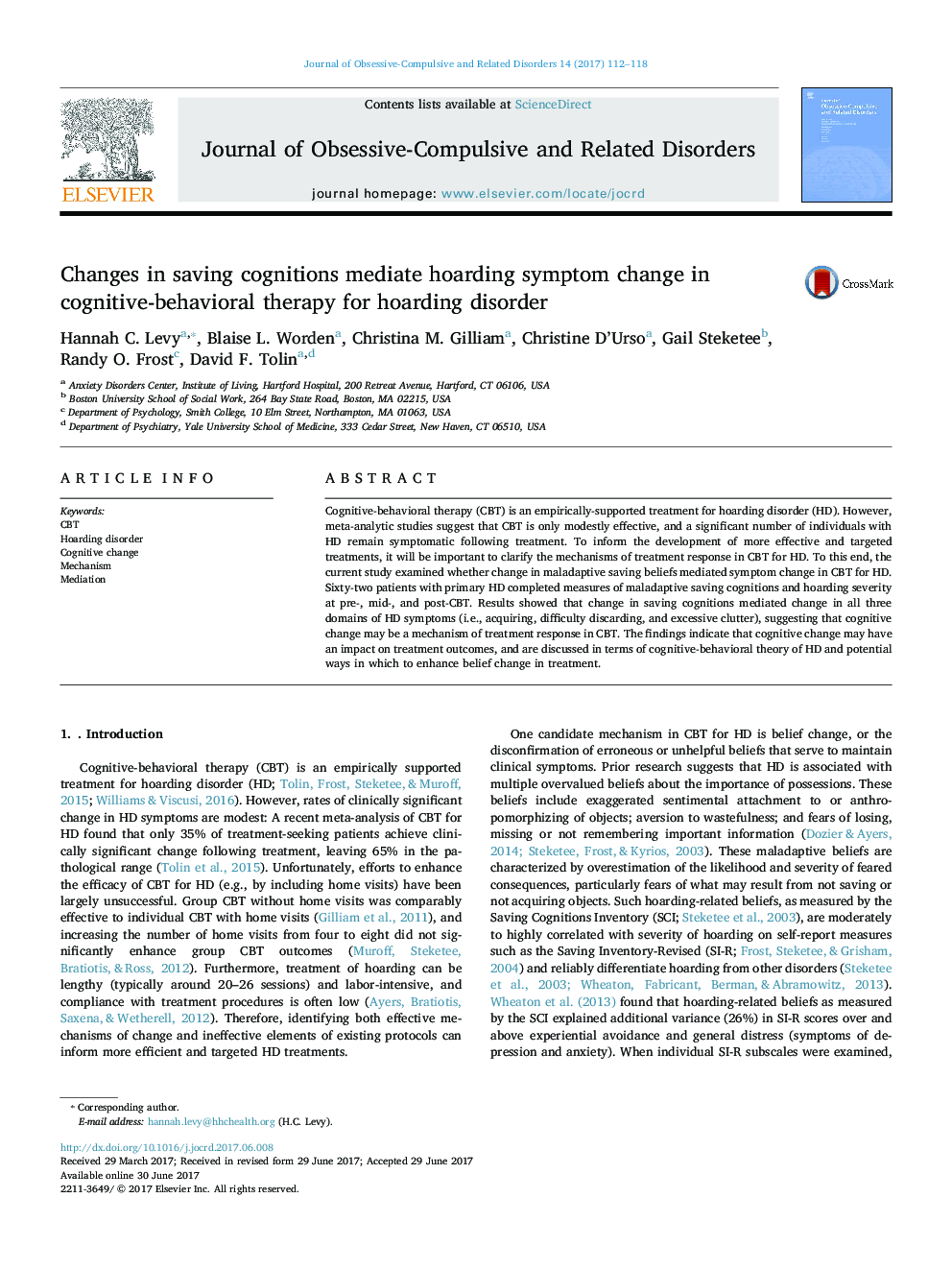| کد مقاله | کد نشریه | سال انتشار | مقاله انگلیسی | نسخه تمام متن |
|---|---|---|---|---|
| 5039334 | 1473193 | 2017 | 7 صفحه PDF | دانلود رایگان |
- Cognitive-behavioral therapy (CBT) is effective for hoarding disorder (HD).
- It is important to clarify mechanisms of change to inform treatment development.
- We examined whether changes in saving beliefs mediated HD symptom change during CBT.
- All domains of saving beliefs mediated change in the core symptoms of HD.
- Results suggest that cognitive change may be a mechanism of response in CBT.
Cognitive-behavioral therapy (CBT) is an empirically-supported treatment for hoarding disorder (HD). However, meta-analytic studies suggest that CBT is only modestly effective, and a significant number of individuals with HD remain symptomatic following treatment. To inform the development of more effective and targeted treatments, it will be important to clarify the mechanisms of treatment response in CBT for HD. To this end, the current study examined whether change in maladaptive saving beliefs mediated symptom change in CBT for HD. Sixty-two patients with primary HD completed measures of maladaptive saving cognitions and hoarding severity at pre-, mid-, and post-CBT. Results showed that change in saving cognitions mediated change in all three domains of HD symptoms (i.e., acquiring, difficulty discarding, and excessive clutter), suggesting that cognitive change may be a mechanism of treatment response in CBT. The findings indicate that cognitive change may have an impact on treatment outcomes, and are discussed in terms of cognitive-behavioral theory of HD and potential ways in which to enhance belief change in treatment.
Journal: Journal of Obsessive-Compulsive and Related Disorders - Volume 14, July 2017, Pages 112-118
